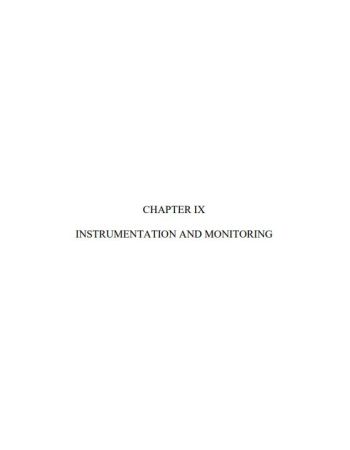Engineering Guidelines for the Evaluation of Hydropower Projects: Chapter 9- Instrumentation and Monitoring: Difference between revisions
(Created page with "{{References Template |author= <!-- Add author/publisher below--> Federal Energy Regulatory Commission |date= <!-- Add publication year --> 2015 |picture= <!--create a file below in format File:example.png, then add picture to that file--> File:CH9.jpg |link= <!-- Add Url to document below (To retrieve URL from a pdf, add document as a pdf file and copy link address from its page--> https://3.238.206.13/images/1/1e/CH9.pdf |abstract= <!-- Add document summary-->...") |
No edit summary |
||
| Line 15: | Line 15: | ||
|link= | |link= | ||
<!-- Add Url to document below (To retrieve URL from a pdf, add document as a pdf file and copy link address from its page--> | <!-- Add Url to document below (To retrieve URL from a pdf, add document as a pdf file and copy link address from its page--> | ||
https:// | https://44.209.150.230/images/1/1e/CH9.pdf | ||
|abstract= | |abstract= | ||
Revision as of 23:39, 7 December 2022
Federal Energy Regulatory Commission, 2015

The purpose of this chapter is to provide staff engineers with recommended guidelines to use in reviewing and evaluating the adequacy of instrumentation and monitoring programs in license applications, supporting design reports, FERC Part-12 consultants reports, or programs recommended by the regional office inspector following operation or construction inspections. There are no simple rules for determining the appropriate level of instrumentation and monitoring because it depends on the size and hazard potential classification of the dam, the complexity of the dam and foundation, known problems and concerns, and the degree of conservatism in the design criteria. Therefore, evaluation of instrumentation and monitoring programs requires staff to apply engineering judgement and common sense.
A major change in the extent of existing instrumentation programs at most projects is not anticipated, though some dams will require additional instrumentation. Many monitoring programs may need to be improved. Emphasis should be placed on timely collection and evaluation of the instrumentation data. This chapter discusses the philosophy of instrumentation and monitoring, commonly used instruments, minimum instrumentation guidelines, instrumentation system design, monitoring schedule guidelines, data processing and evaluation, automated data acquisition, and examples of acceptable instrumentation and data presentation.
Revision ID: 5057
Revision Date: 12/07/2022
